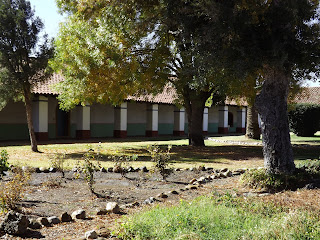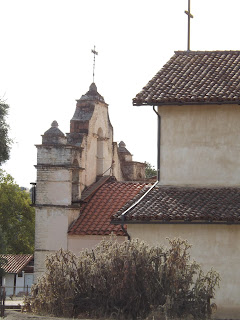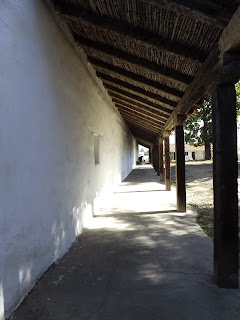The 21 California missions were
the first permanent European settlements to be founded on the West coast,
beginning in 1769.
The Santa Barbara Mission was
established on the Feast of Saint Barbara, December 4, 1786 by Padre Fermín
Lasuén (who had taken over the presidency of the California mission chain upon
the death of Father Presidente Junípero Serra) and was the tenth of twenty-one
California Missions to be founded in Alta California. It is called “The Queen of the
Missions.” Mission Santa Barbara is the
only mission to remain under the leadership of the Franciscan Friars since its
founding, and today is a parish church of the Archdiocese of Los Angeles. Mission Santa Barbara's name comes from the
legend of Saint Barbara, a girl who was supposedly beheaded by her father for
following the Christian Faith.
The early missionaries built
three different chapels during the first few years, each larger than the
previous one. It was only after the great Santa Barbara Earthquake on December
21, 1812, which destroyed the existing buildings, that the construction on the
current Mission was begun. It was completed and then dedicated in 1820. The
towers were considerably damaged in the June 29, 1925 earthquake, but were
subsequently rebuilt in 1927. The appearance of the inside of the church has
not been altered significantly since 1820.
Many elements of the Mission's
extensive water treatment system, all built by Chumash Indians' labor
(including aqueducts, two reservoirs, and a filter house) remain to this day,
as does a grain mill; the larger reservoir, which was built in 1806 by the
expedient of damming a canyon, has been incorporated into the City's water
system. The original fountain and lavadero are also intact near the entrance to
the Mission. The lavandaria end spout is
a neophyte-carved Cougar's head and is the oldest public sculpture in the state
of California.
In 1818, two Argentine ships
under the command of the French privateer Hipólito Bouchard approached the
coast and threatened the young town of Santa Barbara. The padres armed and
trained 150 of the neophytes to prepare for attack. With their help, the
Presidio soldiers confronted Bouchard, who sailed out of the harbor without
attacking.
After secularization in 1833
Father Presidente Narciso Durán transferred the missions' headquarters to Santa
Barbara, thereby making Mission Santa Barbara the repository of some 3,000
original documents that had been scattered through the California missions.
In 1840, Alta California and Baja
California were removed from the Diocese of Sonora to form the Diocese of Both
Californias. Bishop Francisco Garcia Diego y Moreno, OFM, established his
cathedra at Mission Santa Barbara, making the chapel the pro-cathedral of the
diocese until 1849. It is for this
reason that of all the California missions, only the chapel at Mission Santa
Barbara has two matching bell towers.
Learn more about the missions and other great places to
visit along the coast in “Along the King’s Road: A Guide to Touring the
California Missions.” Get your copy today!













































